Detecting even the weakest strokes
A professional lightning detection system should aspire to detect all lightning strokes in the area surveyed. This is the only way to ensure comprehensive information on how severe a storm is and how it develops. Intra-cloud strokes, in particular, which are important to assess the severity of a storm, are characterized by low signal strengths. But also weak cloud-to-ground strokes can cause severe damage.
LINET captures significantly more signals
An ingenious antenna design, highly efficient measurement techniques and filter mechanisms which have been optimized over the years allow for very low thresholds when it comes to the measuring sensitivity of LINET sensors. In this manner, even weak lightning strokes can be detected and located. The significantly higher number of lightning phenomena measured is helpful in processing data for our cell tracking and nowcasting. The excellent sensor sensitivity is crucial for the outstanding location accuracy of LINET.
Detection of weak lightning strokes in detail
Historically, most lightning detection systems have focused on reporting strong cloud-to-ground strokes. These so-called “return strokes” can usually be recognized by means of typical field leaps and signal shapes. In this way, algorithms to differentiate those strokes from intra-cloud strokes were developed. However, the detection of all lightning strokes as comprehensively as possible, also requires the reliable locating of weak lightning strokes, which cannot always be clearly distinguished by their signal shape. Hence, nowcast locates all lightning signals irrespective of the specific signal shape. This has resulted in a significantly higher probability of detecting weak strokes.
Interestingly, there are also cloud-to-ground strokes which occur in their own lightning channel after a classic “return stroke”, and do not display the typical signal shape. These strokes are detected by LINET, but not by the other lightning-detection systems (Stolzenburg et al., “Stroke-Like Upward Illumination Occurring Within a Few Milliseconds After Lightning Return Strokes”, submitted to JGRD, 2012).
Total lightning visibility
The method selected by nowcast is indispensible if intra-cloud strokes are to be efficiently located as well. These strokes come in many different signal shapes that cannot be easily categorized. For this reason, LINET stands for “Total Lightning” and reliably detects intra-cloud as well as cloud-to-ground strokes and enables perfect tracking of storm developments.
Detection efficiency is indicated by nowcast using the lightning-current strengths detected (Ampere), not in percentage values as is common practice. Because the total number of lightning strokes actually occurring is not known by anyone, using percentages is misleading. With respect to intra-cloud strokes in particular, it is completely unknown how many weak discharges actually take place. However, with the sensor density as recommended by nowcast, a great and representative number of intra-cloud strokes is detected. During the past years, nowcast itself, as well as customers and partners of nowcast, compared data with numerous other networks, and always observed that nowcast locates substantially more lightning phenomena than any other low-frequency system.
In 2011, nowcast compared data with the special local lightning-detection system of NASA in Florida (Kennedy Space Center), which not only detects lightning strokes in the low-frequency range, but also locates weak lightning discharges (“leader steps”) in the high-frequency range, and hence allows for a highly efficient detection of cloud discharges. It was proven that the nowcast lightning detection network measures just as many intra-cloud strokes (“cloud flashes”) as the NASA system, and is thus entitled to use the hallmark of quality “Total Lightning”.




